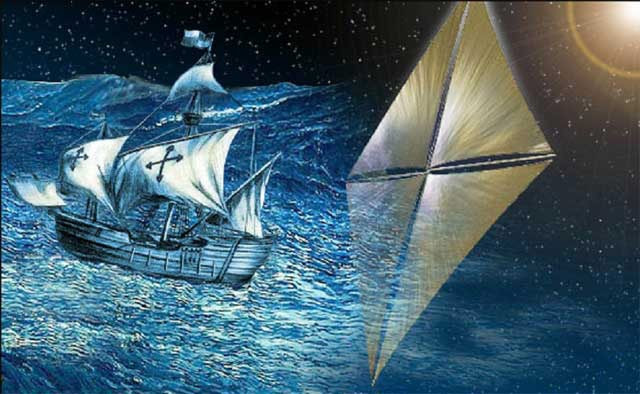Nasa Dampens Hopes for Solar Sail to Power Space Travel

Work is underway on a gigantic solar sail to take people on vast journeys through space.
Nasa is developing an ultra-thin sail to attach to capsules to power space travel instead of fuel.
But one drawback is that, in order to work, the sail will have to be big enough to cover the whole of France, as well as Belgium and Switzerland.
Next year will see a test take place on the biggest-ever prototype to find out how good the technology is at harnessing space weather.
The aim is to show that "propellantless propulsion" is possible by sending the solar sail nearly 2 million miles away from earth.
With a size of 13,000 square feet, the sail will look like the biggest ever piece of tinfoil, but it will still be tiny compared to what is needed. Ongoing work to manufacture the sail is delicate and laborious because the sail material is much thinner than even a postage stamp.
One paradox at the heart of the Sunjammer project is that, while the particles of Sunlight which will push the sail and the craft through space do not have any mass, they do have momentum.
But for some people, the Sunjammer project could be humankind's best hope for reaching solar systems beyond our own.
Experts who believe that humankind's future can be secured only by moving off planet Earth face the big challenge of how to overcome the gigantic interstellar distance to another solar system.
Using current chemical-based fuels, the trip to the nearest solar solar system - Alpha Centauri - would take 40,000 years.
Making the journey at the speed of light would drastically cut the journey time there by around 39,995 years. But this remains theoretically improbable. This is because people and objects like spacecraft cannot travel at light-speed, which is something only massless particles can do.
The upshot is that the wait for the first solar sail-powered space journey remains a long way off.
Les Johnson, who is deputy manager of Nasa's Advanced Concepts Office, thinks it could be centuries.
Johnson told Space.com: "I think it's 300 to 500 years away, personally. I think before we ever really undertake sending something to another star, we will probably have to be masters of our own solar system."
© Copyright IBTimes 2025. All rights reserved.






















